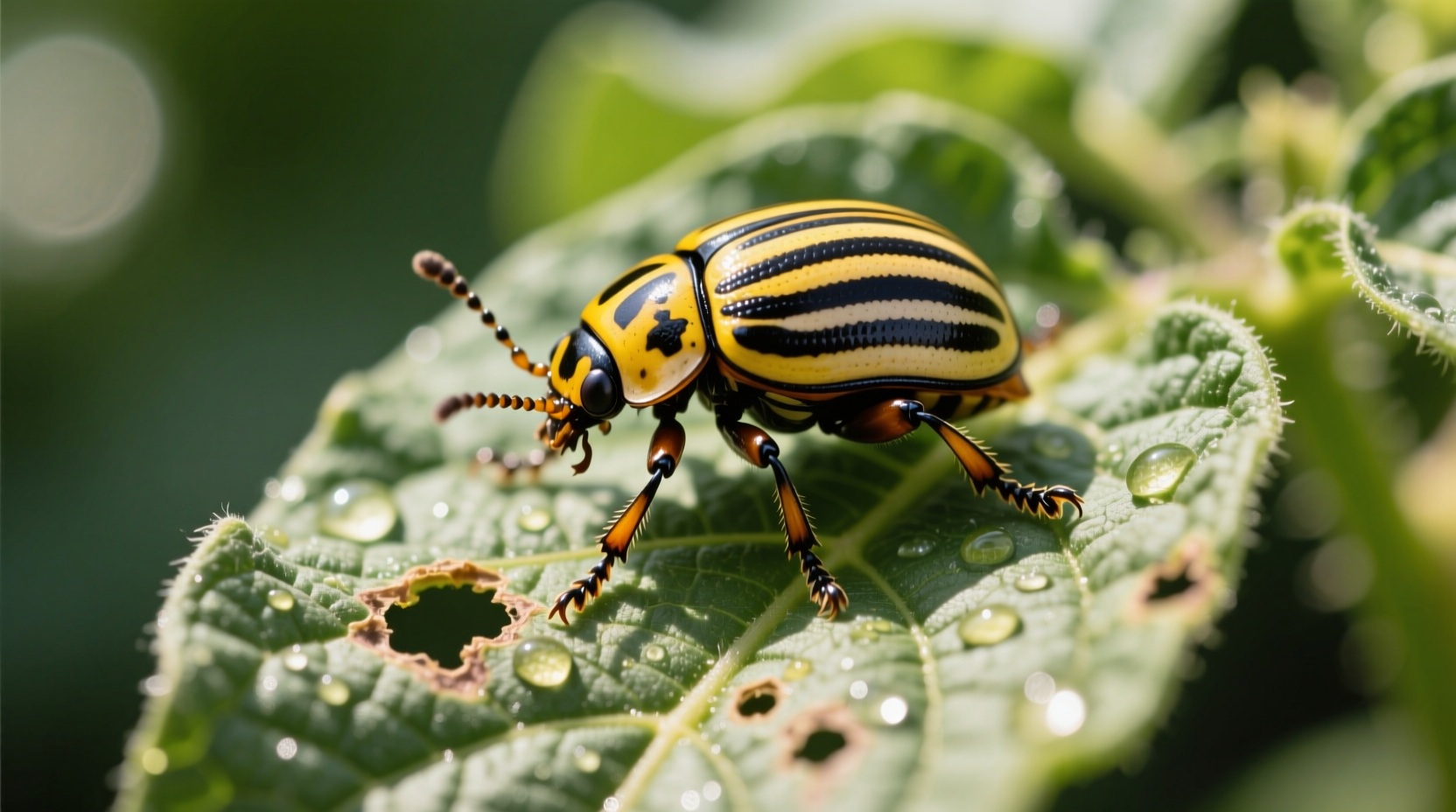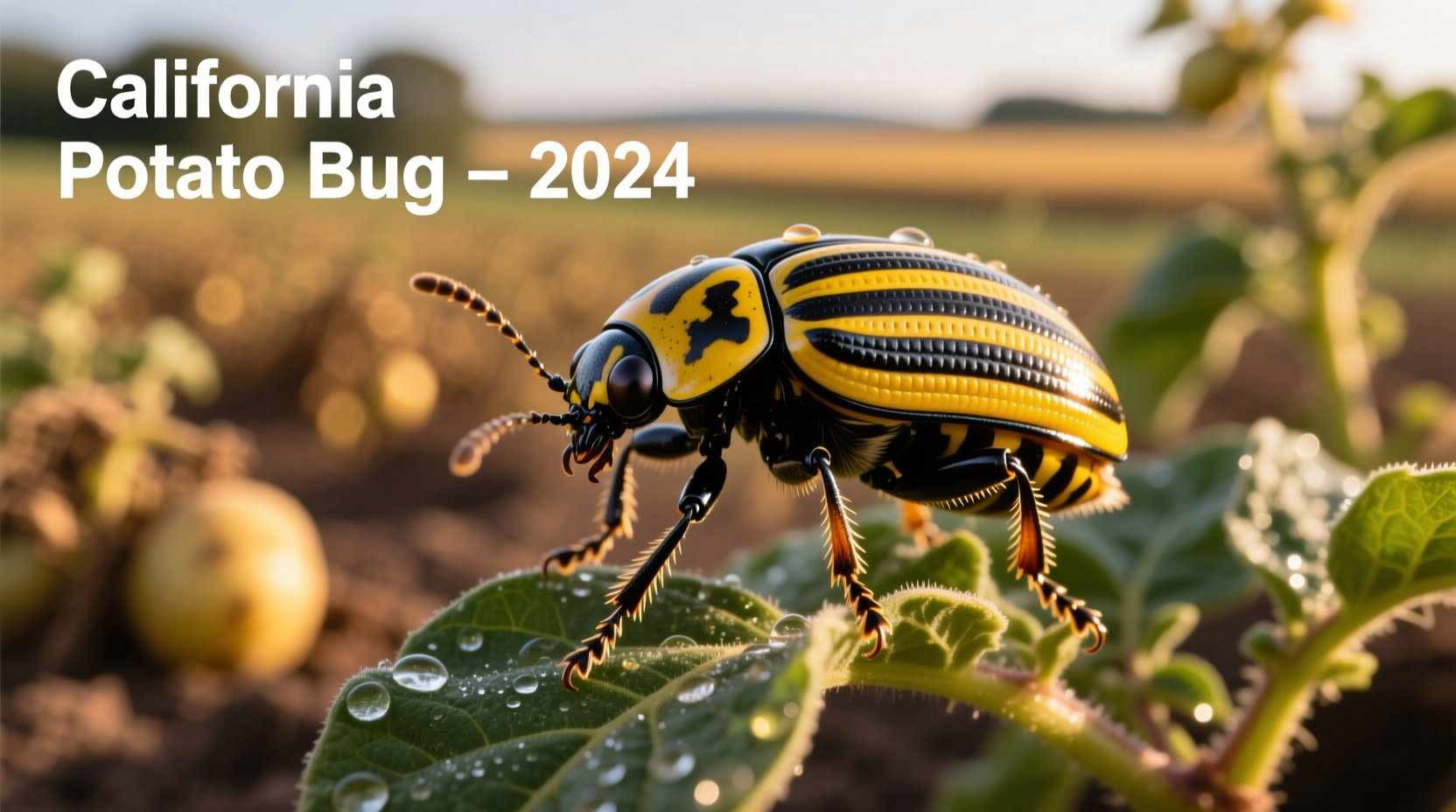What Is the “California Potato Bug” Really?
Despite the common name, there is no distinct species known as the “California potato bug.” Home gardeners and farmers in California typically use this term to describe the Colorado potato beetle (Leptinotarsa decemlineata), which has become a significant pest in potato-growing regions across the state. This misidentification causes confusion when seeking proper control methods.
The Colorado potato beetle was first identified feeding on buffalo bur (a wild relative of potatoes) in the Rocky Mountains. It migrated westward with potato cultivation and became established in California by the early 20th century. Understanding this pest's true identity is the first step toward effective management in California gardens and farms.

Accurate Identification: Spotting the Real Culprit
Proper identification prevents wasted effort on ineffective treatments. The Colorado potato beetle has distinctive features that set it apart from other garden beetles:
- Adults: Yellow-orange oval beetles about 1/3 inch long with 10 black stripes running lengthwise on their wing covers
- Eggs: Bright orange clusters of 10-30 eggs laid on the undersides of potato leaves
- Larvae: Reddish with black heads and two rows of black dots along each side; grow to about 1/2 inch
- Pupae: Orange-red stage found in soil before emerging as adults
| Insect | Color | Size | Distinctive Features | Found on Potatoes? |
|---|---|---|---|---|
| Colorado potato beetle | Yellow-orange with black stripes | 1/3 inch | 10 black stripes on wing covers | Yes - primary host |
| Lady beetle | Red with black spots | 1/10 inch | Hemispherical shape, spots vary | No - beneficial predator |
| Flea beetle | Black or metallic | 1/16 inch | "Fleas" when disturbed | Sometimes - different damage pattern |
| False potato beetle | Yellow-orange | 1/3 inch | No stripes, grayish larvae | Rarely - feeds on nightshades |
California Potato Beetle Timeline: How This Pest Spread
Understanding the historical context helps explain why this pest is so problematic in California agriculture today. The Colorado potato beetle's journey across North America represents one of the most significant agricultural pest invasions in history:
- 1850s: First documented as a pest of cultivated potatoes in Nebraska
- 1870: Reached the East Coast, causing widespread crop damage
- 1874: First reported in California, likely transported with potato shipments
- 1900-1950: Became established in major potato-growing regions throughout the state
- 1980s-present: Developed resistance to multiple insecticide classes, complicating control efforts
Damage Patterns: Recognizing Potato Beetle Infestation
Early detection is critical for effective management. Colorado potato beetles cause distinctive damage that progresses through predictable stages:
Leaf Damage Progression
- Early stage: Larvae create small holes between leaf veins, giving leaves a “skeletonized” appearance
- Middle stage: Larger larvae consume entire leaves except for the main veins
- Advanced stage: Complete defoliation of plants, significantly reducing yield
According to UC Agriculture and Natural Resources, a single generation of Colorado potato beetles can defoliate an entire potato field within 10-15 days under optimal conditions. The beetles prefer potato plants but will also feed on other nightshades including tomatoes, eggplants, and peppers when potato plants are unavailable.
Effective Management Strategies for California Gardeners
Managing Colorado potato beetles requires an integrated approach. The most successful control combines multiple methods rather than relying on a single solution. Here's what works best in California's diverse growing conditions:
Preventive Measures
- Crop rotation: Rotate potatoes with non-host crops (like grains or legumes) for at least 3 years between potato plantings
- Physical barriers: Use floating row covers immediately after planting to prevent adult beetles from reaching plants
- Trap cropping: Plant early “decoy” potatoes away from your main crop to attract beetles for easier removal
Organic Control Methods
- Hand-picking: Most effective early in the season; drop beetles into soapy water (best done in morning when beetles are less active)
- Neem oil: Disrupts feeding and development; apply every 5-7 days, focusing on undersides of leaves
- Bt var. tenebrionis (Beauveria bassiana): A biological insecticide specifically targeting Colorado potato beetle larvae
- Beneficial insects: Encourage lady beetles, lacewings, and parasitic wasps that prey on potato beetle eggs and larvae
Chemical Control (When Necessary)
For severe infestations, targeted insecticides may be needed. Due to widespread resistance, rotate between different chemical classes:
- Spinosad: Organic option effective against larvae
- Pyrethroids: Use sparingly due to resistance issues and harm to beneficial insects
- Neonicotinoids: Seed treatments can provide early-season protection but have environmental concerns
Always follow label instructions and apply in the evening when bees are less active. According to the University of California Integrated Pest Management Program, rotating between different control methods prevents resistance development and maintains effectiveness over time.
When Control Becomes Necessary: Context Boundaries
Not every sighting of Colorado potato beetles requires immediate action. Understanding the threshold for intervention prevents unnecessary treatments:
- Home gardens: Hand-pick adults and larvae when you see them; treat only if defoliation exceeds 20%
- Small-scale farms: Consider treatment when 5-10% of plants show damage or when 2-3 beetles are found per plant
- Commercial operations: Follow UC IPM guidelines with regular field monitoring and treatment thresholds
Early-season infestations require more aggressive management than late-season ones, as plants can often tolerate some defoliation closer to harvest. The UC Statewide IPM Program recommends that mature potato plants can withstand up to 50% defoliation without significant yield loss if it occurs within three weeks of harvest.
Common Misconceptions About “California Potato Bugs”
Several myths persist about these pests that lead to ineffective management:
- Myth: “They're native to California” Fact: They originated in the Rocky Mountain region and migrated west with potato cultivation
- Myth: “They only eat potatoes” Fact: They feed on various nightshade plants including tomatoes, eggplants, and peppers
- Myth: “One treatment eliminates them for the season” Fact: Multiple generations emerge each season requiring ongoing management
- Myth: “They're related to true bugs” Fact: They're beetles (order Coleoptera), not true bugs (order Hemiptera)
Long-Term Prevention: Building Resilience Against Potato Beetles
Sustainable management requires thinking beyond immediate control. These strategies build long-term resilience in your garden or farm:
- Diverse plantings: Interplant potatoes with deterrent crops like basil, tansy, or horseradish
- Soil health: Healthy soil produces stronger plants better able to withstand pest pressure
- Early detection system: Check plants twice weekly, focusing on undersides of leaves where eggs are laid
- Overwintering disruption: Till soil in fall to expose overwintering adults to predators and cold temperatures
Research from the USDA Agricultural Research Service shows that combining multiple control methods reduces Colorado potato beetle populations by up to 80% compared to single-method approaches. The key is consistency and early intervention before populations explode.











 浙公网安备
33010002000092号
浙公网安备
33010002000092号 浙B2-20120091-4
浙B2-20120091-4